- Fisheries Management in New Zealand
- Species
- Customary
- Aotea Great Barrier Temporary Closure 2023
- Astrolabe Reef s186A closure 2016
- Coromandel East temporary closure 2021
- Coromandel East temporary closure 2024
- Hauraki Gulf temporary closures 2024
- Kauaetangohia Mātaitai
- Maunganui Bay temporary closure
- Napier Reef temporary closure 2023
- Ōmāui Mātaitai 2019-20
- Taranaki temporary closure 2022
- Tautuku Mātaitai 2019-21
- Te Māta temporary closure
- Tutukaka – Ngunguru temporary closure 2023
- Umupuia temporary closure
- Waiheke temporary closure 2021
- Waimārama temporary closure 2020 -22
- Whangaroa temporary closure 2021
- Fisheries policy & reform
- Fisheries plans
- Legislation and reviews
- Regulatory reviews
- Crayfish Aggregation limit exemption 2016
- Deemed value review 2016
- Deemed value review 2021
- Deemed value review 2022
- Excess aggregation limits EMA KAH 2020
- Finfish bag limits review 2021
- Fiordland amateur regulations review 2022
- Papamoa Beach bylaw review 2018
- Seabird mitigation measures 2023
- Technical change proposals 2022
- Submissions by year
- North & South Islands submissions
- 2024 Submissions
- Coromandel East temporary closure 2024
- Crayfish 3 TAC review 2024
- Crayfish 7 and 8 review 2024
- Exception review for predated HMS 2024
- Fast Track Approvals Bill 2024
- Hauraki Gulf temporary closures 2024
- Kaikōura pāua reopening 2024
- Kina 1 review 2024
- Pacific bluefin landing review 2024
- Southern bluefin landing review 2024
- Southern bluefin TAC review 2024
- Waikato Regional Coastal Plan 2022-24
- 2023 submissions
- Aotea Great Barrier Temporary Closure 2023
- Coromandel scallop closure review 2023
- Crayfish 1 TAC review 2023
- Deemed values review SNA 2023
- Gurnard 3 TAC review 2023
- Industry Transformation Plan 2023
- Hauraki Gulf Fisheries Plan 2023
- Hauraki Gulf trawl corridors 2023
- Kina 1 TAC review 2023
- Kina dredging Tory Channel review 2023
- Marine Protection Bill 2023
- Napier Reef temporary closure 2023
- Pāua 2 Draft Fisheries Plan 2023
- Pāua 2 TAC review 2023
- Red cod land-all catch review 2023
- Seabed mining inquiry 2023
- Seabird mitigation measures 2023
- Trevally 2 TAC review 2023
- Tutukaka – Ngunguru temporary closure 2023
- Waikato Regional Coastal Plan 2022-24
- 2022 submissions
- Blue cod 7 TAC review 2022
- Crayfish 1, 7 & 8 TAC review 2022
- Deemed value review 2022
- Fiordland amateur regulations review 2022
- Fisheries Amendment Bill 2022
- FMA 7 TAC review 2022
- Gurnard 3 TAC review 2022
- Habitats of significance 2022
- Hākaimangō-Matiatia (Northwest Waiheke) Marine Reserve
- Hāpuku Bass 7 & 8 TAC Review 2022/23
- Hauraki Gulf Marine Protected Areas 2022
- Kaikōura pāua reopening 2022
- Maunganui Bay temporary closure
- Northland area closure proposals 2022
- Pāua 5 Draft Fisheries Plan
- Rig 3 TAC review 2022
- Northland & Coromandel Scallop TAC Review 2022
- Tarakihi east coast TAC review 2022
- Taranaki temporary closure 2022
- Technical change proposals 2022
- Te Māta closure application
- Waikato Region Coastal Plan 2022
- Waimārama temporary closure 2020 -22
- Umupuia temporary closure 2008-2022
- 2021 submissions
- Blue cod 3 TAC review 2021
- Cameras on boats 2021
- Clive River dredging 2021
- Coromandel East temporary closure 2021
- Crayfish 1, 3, 4, 5 & Packhorse TAC review 2021
- Elephant fish 7 TAC review 2021
- Finfish bag limits review 2021
- Flatfish 2 TAC review 2021
- Gurnard 1 TAC review 2021
- Hāpuku-Bass 1 & 2 TAC review 2021
- Kaikōura pāua fishery reopening 2021
- Kingfish 8 Deemed value review 2021
- Snapper 8 TAC review 2021
- Southern bluefin tuna TAC review 2021
- Tarakihi east coast TAC review 2021
- Waiheke temporary closure 2021
- Whangaroa temporary closure 2021
- Yellow-eyed mullet 9 TAC review 2021
- 2020 submissions
- Aggregation limits kahawai, jack mackerel 2020
- Blue cod 5 TAC review 2020
- Crayfish 1, 3, 4, 7 & 8 TAC review 2020
- Crayfish ACE carry forward 2020
- Gurnard 7 TAC review 2020
- Kingfish 2, 3, 7 & 8 TAC review. July 2020
- Maunganui Bay temporary closure
- National Finfish Fisheries Plan 2019-20
- National Rock Lobster Management Group review 2020
- Northland scallop TAC review 2020
- Pāua 3 subdivision 2020
- Pōrae 1 TAC review 2020
- Sea Change Marine Spatial Plan 2014-21
- Snapper 7 TAC review 2020
- South Island trawl species review 2020
- Tautuku Mātaitai application 2019-21
- Waimārama temporary closure 2020 -22
- 2019 submissions
- 2018 Submissions
- 2017 Submissions
- 2016 Submissions
- Astrolabe Reef closure application
- Bluenose management review
- Coromandel Scallops
- Crayfish 3 Gisborne
- Crayfish management 2016
- Deemed values 2016
- Jack mackerel 3 management review
- John dory 7 management review
- Paua 7 South Island
- Quota aggregation limits exemption
- Scallops (SCA7) management 2
- Seabed mining Taranaki 2016
- Snapper 7 management review
- Surf Clam 7 review 2016
- 2015 Submissions
- 2014 Submissions
- 2013 Submissions
- 2012 Submissions
- 2011 Submissions
- 2010 Submissions
- 2009 Submissions
- 2008 Submissions
- 2007 Submissions
- Regional issues
- Aquaculture
- Bay of Plenty
- Hauraki Gulf
- Coromandel East temporary closure 2021
- Hākaimangō-Matiatia (Northwest Waiheke) Marine Reserve 2022
- Hauraki Gulf Fisheries Plan 2023
- Hauraki Gulf Marine Protected Areas 2022
- Hauraki Gulf trawl corridors 2023
- Marine Protection Bill 2023
- Ponui mussel farm proposal
- Sea Change Marine Spatial Plan 2014-21
- Te Māta temporary closure
- Umupuia temporary closure 2008-2022
- Coromandel scallop closure review 2023
- Waiheke temporary closure 2021
- Waikato Region Coastal Plan 2022
- Waikato Regional Coastal Plan 2022-24
- Marlborough and Tasman
- Northland
- Southland and Otago
- Marine protection
- RMA
- Research and reports
- Document Index
- Document Search
2016 Submissions
presented by the New Zealand Sport Fishing Council – LegaSea
Introduction
The New Zealand Sport Fishing Council has an experienced fisheries management, science, policy and legal team.
The Council has proudly and determinedly represented our recreational fishing and environmental interests for 59 years.
We strive to present cogent arguments and develop policies with the objective of ensuring the management measures and controls applying in our fisheries are designed and implemented to achieve the Purpose and Principles of the Fisheries Act 1996.
Restoring abundance in our inshore fisheries has been a particular focus for the Council.
Due to the extensive, nationwide interest of our 57 clubs the Council submits on a range of issues and proposals. Given these broad interests our team also engages in a variety of processes that impact on the marine environment.
The Council uses LegaSea to publicise their ongoing work and generate public awareness of the important issues. 
LegaSea provides public-friendly information so you can understand the complex issues and threats facing our recreational and environmental fishing interests.
What follows is a summary of submissions made in 2016. More will be added during the year. Latest documents are at the top of the lists.
Click on the right-hand image to download the document or follow the link to read more detail.
Submission. Future of our Fisheries. 23 December 2016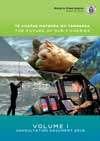
A submission by recreational interests to achieve abundance and diversity in NZ’s inshore marine environment. This submission was jointly compiled by the NZSFC members, the NZ Angling and Casting Association and LegaSea supporters. The Future of our Fisheries process is a follow-on from the 2015 fisheries system review.
Submission. Southeast coast MPAs. 23 December 2016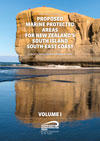
A submission supporting 6 of the 20 proposed Marine Protected Areas for the southeast coast of the South Island. This submission highlights the lack of consideration given to the safety of people in small craft who need to fish close to the shoreline, and the prevailing adverse weather conditions that give natural protection to the region for most of the year.
Submission. Crayfish 3 (CRA3) Gisborne. 21 October 2016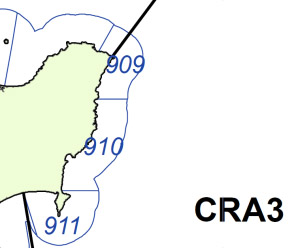
The Gisborne Tatapouri Sports Fishing Club and New Zealand Sport Fishing Council submits the Minister must improve the performance of the CRA3 fishery by firstly addressing the sustainability concerns of non-commercial stakeholders, and agreeing to remove the concession enabling the commercial harvest of crayfish smaller than the Minimum Legal Size that applies to recreational fishing. A full review of rock lobster management in NZ is required.
Submission. Seabed mining Taranaki. 14 October 2016
The New Zealand Sport Fishing Council submits the Environmental Protection Authority (EPA) must decline the seabed mining application by Trans-Tasman Resources Ltd. The NZSFC does not believe the TTR application meets the legal requirements of the Exclusive Economic Zone and Continental Shelf (Environmental Effects) Act 2012.
Submission. Maunganui Bay, Bay of Islands. 20 July 2016
The New Zealand Sport Fishing Council submits in support of the application to extend the temporary closure of Maunganui Bay in the Bay of Islands. The current closure prohibits the take of all fisheries resources except kina. The closure expires on 29 October 2016. The application is to renew that temporary closure for another two years.
Submission. Snapper 7. 9 July 2016
The New Zealand Sport Fishing Council submits the Snapper 7 fishery is in a state of sustainable depletion – that is the fishery was overfished in the 1970s and 80s, it remains below the target level now yet commercial catch rates have been maintained. The Minister must increase the Total Allowable Catch (TAC) to cover existing use, with no increase to the Total Allowable Commercial Catch (TACC).
Submission. Paua 7. 9 July 2016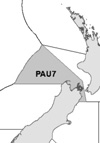
The New Zealand Sport Fishing Council submits in support of the Ministry’s and paua industry’s call for cuts to commercial harvesting to rebuild the Paua 7 fish stock. The Paua 7 stock has been below target stock size for nearly 20 years. Low abundance is impacting on recreational harvest. The NZSFC objects to shelving. There is no statutory support for shelving, the Minister is responsible for rebuilding and maintaining Paua 7 in an abundant state.
Submission. John dory 7. 9 July 2016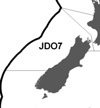
The New Zealand Sport Fishing Council submits the John dory 7 fishery particularly in the Tasman and Golden Bays, is showing signs of growth overfishing. Precautionary management is required for this important fish stock. The proposed increase to the Total Allowable Commercial Catch (TACC) goes against all reasonable expectations and environmental principles.
Submission. Bluenose. 9 July 2016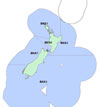
The New Zealand Sport Fishing Council submits in support of the Ministry’s option 3, as a minimum, to rebuild the bluenose fishery to the default target stock size of 40% of unfished biomass, B40. Catch reductions must not be deferred again, as they were in 2013/14, on the promise of more data gathering. Bluenose has all the characteristics of an overexploited stock. It must be rebuilt now.
Submission. Jack mackerel 3. 9 July 2016
The New Zealand Sport Fishing Council submits the Minister must decrease the Total Allowable Catch (TAC) for Jack mackerel 3 to cover existing use. That means reducing the Total Allowable Commercial Catch by half, and establishing allowances for other, fishing related mortality and non-commercial use, both customary and recreational.
Submission. Southern Scallops (SCA7). 1 July 2016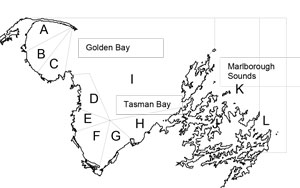
The New Zealand Sport Fishing Council recommends the Scallop 7 fishery is closed to all fishing until abundance surveys indicate a surplus yield is available. When the stock has recovered to a level where there is surplus yield available, the Minister needs to allow a staged resumption of scallop harvest. That is, enable non-commercial use first, then commercial use when more yield is available to sustain both non-commercial and commercial exploitation.
Submission. Umupuia Beach temporary closure. 14 June 2016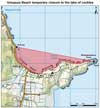
The New Zealand Sport Fishing Council – LegaSea submission supports the Trust’s application for a further 2-year closure of Umupuia Beach, Manukau, to the harvest of cockles. The submitters acknowledge the Trust for their commitment to both protect and rebuild the cockle fishery, and educate the wider community.
Submission. Exemption to crayfish aggregation limit. 13 May 2016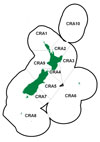
The New Zealand Sport Fishing Council opposes the Fiordland Lobster Company’s application for exemption from the aggregation limit of 10% applicable to CRA 4, 7 & 8. These crayfish stocks, CRA 4 (Wellington/Hawkes Bay), CRA 7 (Otago) and CRA 8 (Southern), are valuable non-commercial fisheries. Aggregation limits are an integral part of the QMS and providing exemptions allows control of fisheries to be vested in a single company, enabling that entity to manipulate the market.
Submission. Astrolabe Reef temporary closure. 14 March 2016
The New Zealand Sport Fishing Council and affiliated Bay of Plenty clubs do not support the current proposal to close Astrolabe Reef to all fishing for two years. The existing closure, due to the Rena grounding, extends 2-nautical miles radius around the reef. The current proposal is to extend that closure to a 3-nautical mile radius. There is no clear explanation why this 126% increase in size is necessary.
Submission. Coromandel scallops. 11 February 2016
The Ministry for Primary Industries continues to withhold commercial catch information requested since 2012. Another request for that data has been made in this submission. The Council urges the Minister to exercise his statutory powers and obligations to prohibit the use of Victorian box dredges due to their damaging effects on scallops, the seabed and habitats that sustain other species such as snapper and other finfish.
Submission. Surf clam 7. 11 February 2016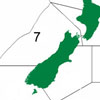
The Ministry for Primary Industries proposes to increase commercial catch levels for surf clams in Area 7 based on ongoing, deliberate excessive commercial harvesting. The Council objects to this mismanagement and instead recommends a management and research plan is developed to incorporate the views of the local community. A more effective system is required to constrain commercial harvest to the lawful sustainability limits set by the Minister.
Submission. Rock lobster – crayfish review. 11 February 2016
The Ministry for Primary Industries advise the National Rock Lobster Management Group (NRLMG) is seeking feedback on proposed new Management Procedures to apply in two rock lobster stocks. Also, decreases in the Total Allowable Commercial Catch (TACC) are proposed for CRA4 (SW North Island) and CRA9 (west coast Kaipara to Franz Josef). The NZSFC support the conservative approach taken by commercial fishers in CRA4. We remain unconvinced that commercial Catch Per Unit of Effort (CPUE) tells the whole story about stock abundance in crayfish stocks.
Submission. Deemed values review. 11 February 2016
The New Zealand Sport Fishing Council recommend the deemed value regime is acknowledged as a failure to constrain commercial catch to the statutory catch limits in some important fish stocks. New Zealand needs a more flexible mechanism to remove the incentive to overcatch the Total Allowable Commercial Catch (TACC) and receive increase Annual Catch Entitlement (ACE) in the future.
Consultation. Marine Protected Areas (MPA) Act. 12 January 2016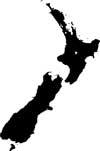
The Government is consulting on a proposal to repeal the Marine Reserves Act and replace it with the Marine Protected Areas (MPA) Act so a network of marine reserves can be established in the Territorial Sea surrounding New Zealand. The Territorial Sea extends from the coastline out to 12 nautical miles. Four types of MPAs are proposed: marine reserves, species-specific sanctuaries, seabed reserves and two recreational fishing parks, one in the Hauraki Gulf, the other in the Marlborough Sounds. The New Zealand Sport Fishing Council will be working with its partners to submit in response to the proposals by the deadline of 11 March.